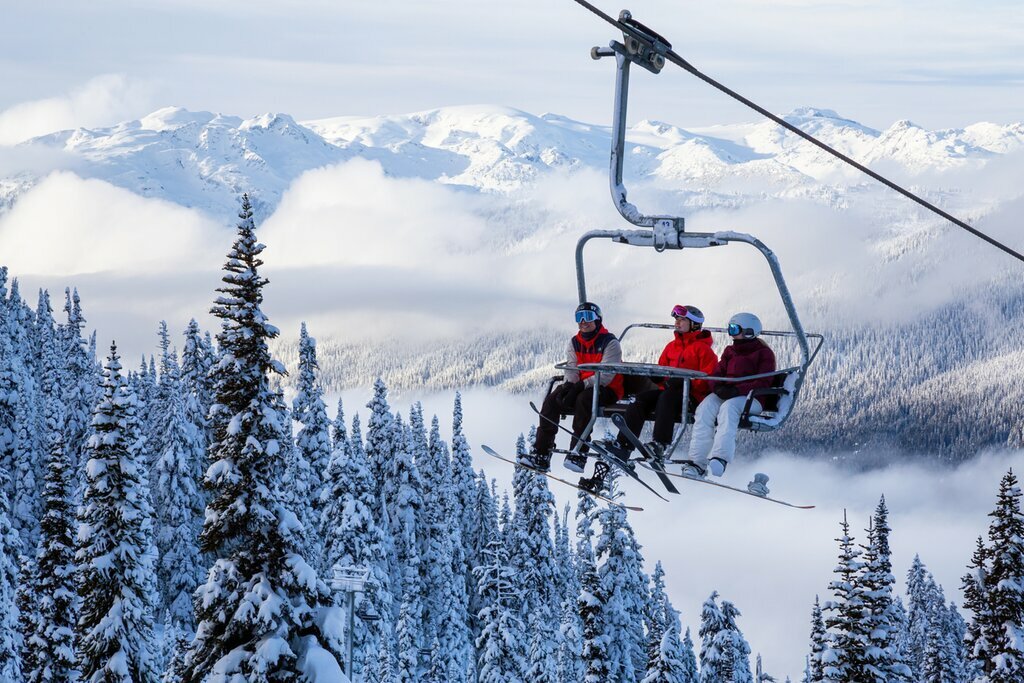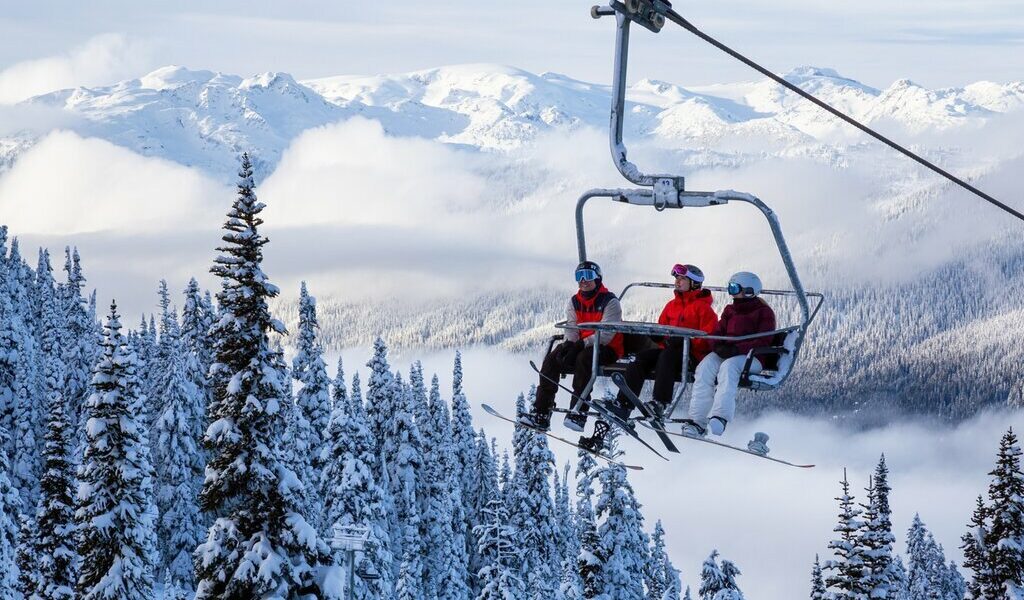
January is midwinter in British Columbia and the coldest month of the year. It’s an ideal time to hit the slopes of the Rocky Mountains and Kootenay Rockies and within easy reach of Vancouver. The provincial capital is also a great destination for travelers interested in museums, galleries, and diverse food, as the climate is relatively mild in January. Read on for more information about traveling to British Columbia this month.
Weather in British Columbia in January
January marks the heart of winter in British Columbia, a time when the province is typically at its coldest. However, given the sheer scale of British Columbia, the climate presents a diverse range of experiences. From north to south and traversing from the coastal regions to the towering mountains, visitors will encounter a variety of weather patterns. Generally, the northern, inland, and mountainous areas experience significantly colder temperatures compared to the milder and wetter climate found along the southern coast. January in British Columbia can range from cool and damp conditions on the southern coast to bitterly cold conditions in the northern reaches and high-altitude areas.
In **Vancouver**, located on the southwestern coast, January brings relatively mild conditions. Expect a minimum temperature of around 36°F (2°C) and a maximum temperature reaching approximately 43°F (6°C). As you venture further inland, the temperatures tend to drop. For instance, in **Kelowna**, situated in the inland southern part of British Columbia, the minimum temperature averages around 25°F (-4°C), while the maximum temperature hovers around 34°F (1°C). The northern regions of the province face much colder conditions. Consider **Fort Nelson**, located in northeastern British Columbia, which sits at roughly the same latitude as Juneau, Alaska. Here, January sees a low of -7°F (-22°C) and a high of only 7°F (-14°C). No matter where your travels take you within British Columbia during this month, packing layers of clothing is absolutely essential, along with a warm, waterproof jacket to protect you from the elements.
Crowds and Costs Associated with January Travel
January is considered the peak season for those seeking skiing and other snow-related activities in the mountain resort towns located in the southern and southeastern regions of British Columbia. Particularly popular are the **Rockies** and **Kootenays**, as well as areas close to **Vancouver**. Renowned resorts such as **Whistler**, **Revelstoke**, and **Kicking Horse** experience high demand during this period, so booking accommodation well in advance is crucial, especially if your travel coincides with the early part of the month when many individuals are still enjoying their winter break from work and school. Expect to encounter elevated prices for both accommodation and transportation to these sought-after destinations.
Outside these well-known mountain resort areas, January represents the low season for travel throughout much of British Columbia. **Vancouver**, as a major city with a more temperate climate, experiences fewer tourists during this time. This could mean some attractive deals and discounts on accommodation. However, smaller towns located inland and along the coast may have limited services and facilities available during the off-season.
Recommended Destinations for January Travel
**Vancouver** stands out as an excellent choice for a trip to the western coast of Canada during January. Its relatively mild climate (although often damp) allows visitors to explore the city comfortably, moving between its museums, restaurants, and other attractions. The **Vancouver Museum of Art** and the **Museum of Anthropology** are highly recommended for those interested in learning more about the local First Nations cultures and history. The city is renowned as one of the most ethnically diverse in Canada, promising an exciting and varied culinary scene, which makes it an ideal destination for a midwinter getaway.
For those seeking more than just a city-based vacation, **Vancouver** is conveniently located within a short drive of numerous exceptional ski resorts situated in the nearby mountains. Consider spending a few days enjoying the attractions of **Vancouver** before venturing north or east to experience skiing, snowboarding, or other thrilling winter activities. **Whistler**, **Grouse Mountain**, **Cypress Mountain**, and **Squamish** all provide easy access to prime skiing, snowboarding, and snowshoeing opportunities this month.
Things to Do and See in British Columbia in January
Active travelers will find plenty of opportunities to embrace the outdoors in January, even if downhill skiing isn’t their preferred activity. Consider snowshoeing or tubing as alternatives. Northwest of **Vancouver**, **Howe Sound** is home to the **Sea to Sky Gondola**. A ride on this gondola provides breathtaking views of the fjord and surrounding mountains. From the top, you can embark on snowshoeing adventures on some of the deepest snow in North America. Alternatively, rent an inflatable inner tube at **Tube** Park and enjoy the thrill of sliding down the snowy hills.
For those wishing to appreciate the awe-inspiring power of nature without braving the snowy conditions, a trip to **Tofino**, situated on the windswept western shores of **Vancouver Island**, offers a unique winter activity: storm watching. Marvel at the giant ocean swells and dramatic rain squalls from the warmth and comfort of a cozy beachfront lodge, complete with picture windows, a crackling fireplace, and perhaps even a glass of locally produced British Columbia wine.
January Events in British Columbia
**Reino Keski-Salmi Loppet**, **Salmon Arm**. The town of **Salmon Arm**, located approximately halfway between Vancouver and Calgary, is the venue for one of Canada’s largest cross-country skiing races, which takes place in late January.
B-215

